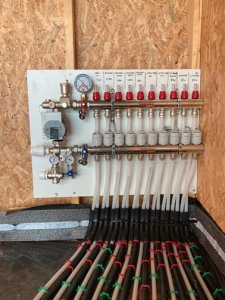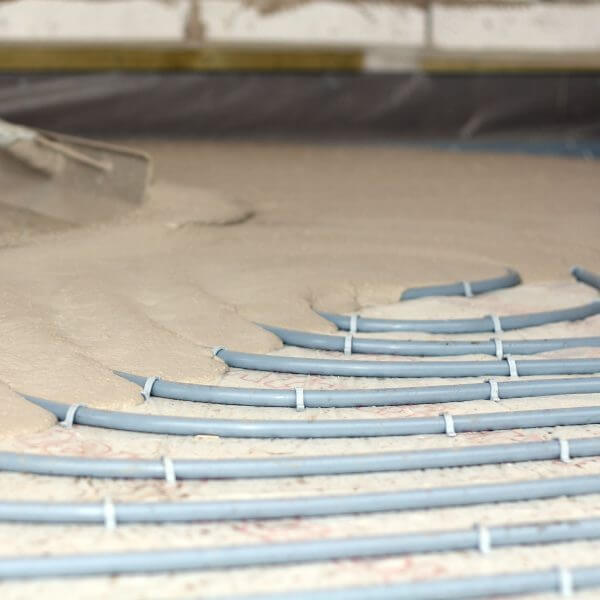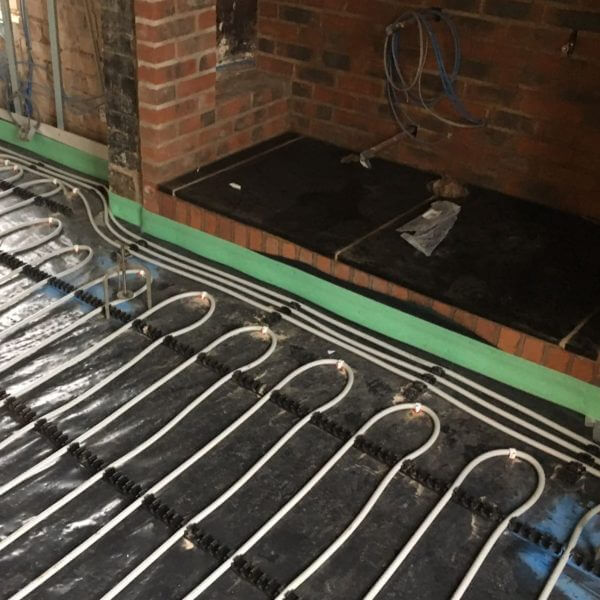How Underfloor Heating Works
Underfloor heating uses a circuit of water pipes or heating wires to distribute heat under your feet. Unlike radiators, underfloor heating works at a lower temperature, distributes heat more evenly and can integrate with thermostats for temperature control of individual rooms or zones.
The longer a circuit is, the lower the temperature will be closer to the end of the circuit. This is because of heat loss as the water or current progresses. Very large rooms may need more than 1 circuit to ensure even distribution of heat throughout.
Circuits come in 2 main types. Serpentine circuits are shaped in a simple wave pattern and are best suited for small spaces such as bathrooms or utility rooms. Counterflow circuits spiral to the centre of the room, then back out again in a reverse pattern, making them suitable for evenly heating bigger rooms. Irregularly shaped rooms may combine the two circuit types to ensure the most even distribution of heat.

How Does an Electric Heating System Work?
Electric underfloor heating works very differently to hydronic heating. It uses thin wires instead of water pipes. When activated, electrical currents run through the wires, causing them to heat up and radiate heat across the circuit.
No boiler, heat pump, or manifold is needed for an electric system to function. The heating circuits have to be linked to a thermostat as well as a power source in order to function. These should only be done by qualified electricians to ensure the electrical system is safely installed.




Where To Find Us